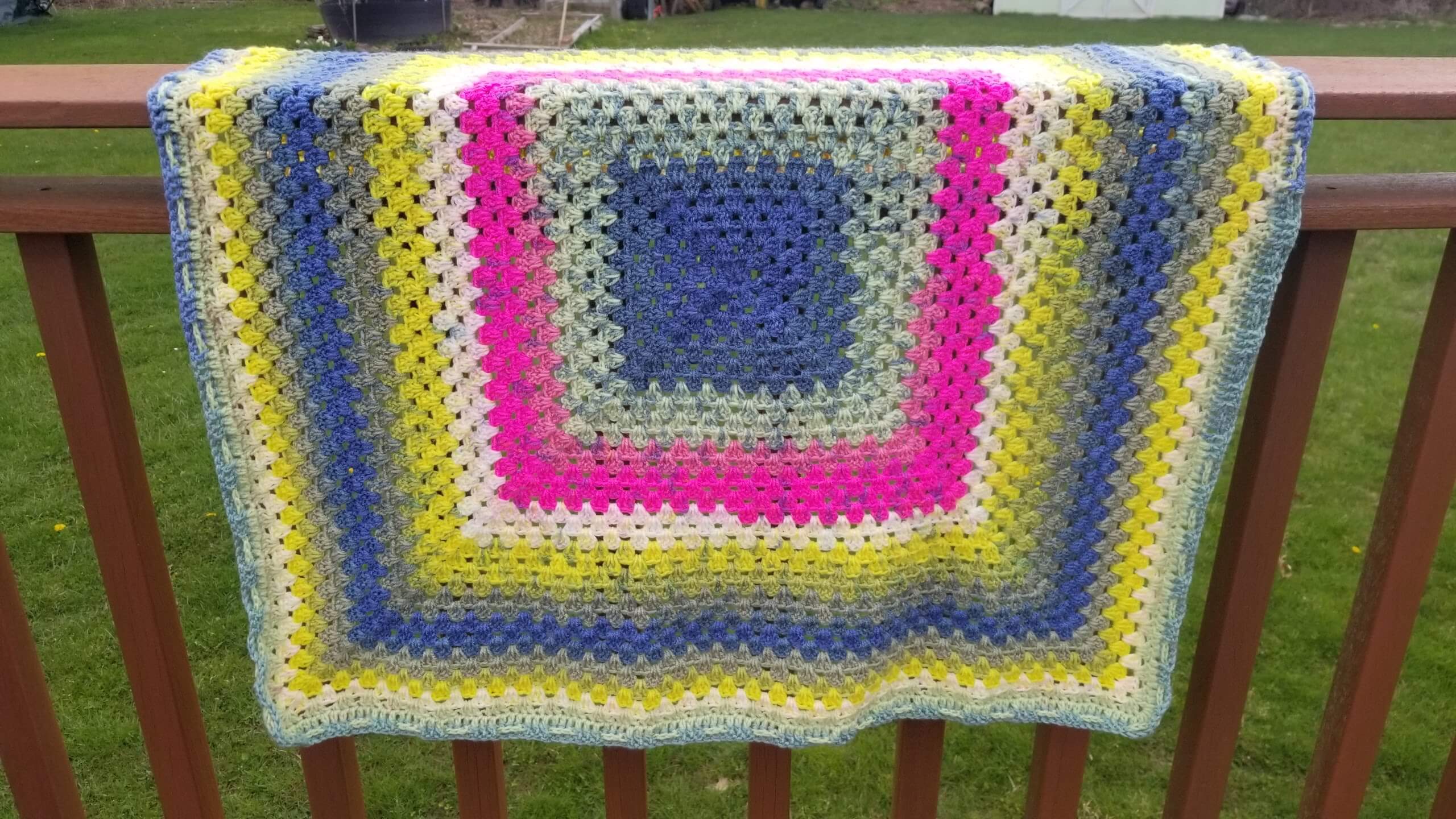Baby Blankets. Crochet One for a Special Baby that they will Cherish.
The most requested crochet patterns are for baby blankets. It is easy to see why. Making a crochet blanket for someone shows that you love them. It takes hours of work and a great deal of thought goes into the project. The result is usually a pretty, unique gift that will be cherished for many years.
Why do babies love blankets?
The simple answer to this question is that blankets are cozy and who doesn't love cozy? It is soft and squishy and feels nice to snuggle.
When can you start using blankets with babies?
Mothers need several blankets from day 1 because babies need to be kept warm. If you live in northern climates, you will need several blankets.
C2C Crochet Pattern is Good for Baby Blankets
Blankets with large holes are a concern for some mothers. They don't want the babies to push their little fingers or toes into the holes. Using stitches with a tighter weave will fit this demand. One dense crochet stitch pattern is the corner to corner technique. It works up fast and is pretty.
What yarn to use for Baby
Blankets?
Baby blankets need to be soft, washable, and lightweight. The skin of babies is very delicate. Use yarn that is not scratchy so as not to irritate the skin. Natural fibers are not necessarily softer than acrylic. You need to know the quality of the yarn by experience or recommendation.
Crochet blankets are notoriously known to be heavy, so choose your yarn wisely with weight in mind.
I love the Mandela yarn for baby blankets because they are lightweight, machine washable, and dryable, and they are beautiful.
Busy parents don't care for items that cannot be easily cleaned. Caring for babies is a messy affair. Everything around them needs to be kept clean at all times so that they can be healthy. Plus, once a baby discovers their hands, everything goes into the mouth.
Make
sure the baby blankets that you gift are machine washable and dryable.
Easy Crochet Baby Blanket Pattern
What are baby blanket
sizes?
Baby blankets have different purposes. Some of these uses are for security, a receiving blanket, a lap blanket, a stroller blanket, or a crib blanket. The security blanket is sometimes called a "lovey."
Loveys is more a toy than a blanket. Loveys can also help your babies feel safe while experiencing new things. In addition, many mothers use it to ease separation anxiety. Child psychologists claim that a lovey can ideally be introduced to a baby at 9 months.
The purpose of the blanket determines the finished size.
Standard baby blanket 42” x 52” (107 cm x 132 cm)
Crib blanket 30”x 36” (76cm x 91cm)
Receiving blanket 40" x 40" (102 cm x 102 cm)
Stroller blanket 30" x 35" (76 cm x 89 cm)
Security Blanket 12" x 12" (30 cm x 30 cm)
Note these are general measurements and not a hard and fast rule of the size of baby blankets. It is your decision. Make your blanket any size that you prefer.
Consideration must be given to which crochet blanket pattern to use when making your baby blanket. Here are some of my favorites:
Catherine Wheel Crochet Stitch Pattern
Continuous Square Granny Crochet Blanket Pattern
 Square Granny Crochet Blanket Pattern
Square Granny Crochet Blanket PatternWaffle Stitch Crochet Pattern makes a great baby blanket
The waffle stitch crochet pattern is great for a baby blanket. Its a modern stitch with a dense texture. No peek-a-booing through this one.
Is a crochet blanket safe
for baby?
Babies worldwide have been using, enjoying, and not being harmed by crochet blankets. Crochet creates a fabric much like weaving. Some crochet fabrics are a tighter weave than others.
Usually, the holes in crochet baby blankets are worrisome for some mothers. I would advise choosing tighter crochet stitch patterns to avoid this concern.
How to choose a baby blanket
When choosing a baby blanket, consider how mom will use it and what color would be preferred. How it is to be used will determine the size of the blanket, the type of yarn used, and even which crochet stitch pattern is used.
The color preference is often governed by the baby's sex or the colors the parents like. If you don't know either of these, don't despair, you can always use neutral tones or rainbow-themed colors. Traditionally, girls are given pink, and boys are given blue. However, if you don't know the baby's sex or want to break out of the traditional mold, there are other colors, such as yellow, purple, black, brown, and white.
How to Crochet a newborn baby blanket
The most pressing considerations in crocheting a newborn baby blanket are that the yarn is soft and lightweight. All babies and especially newborns, have very delicate skin. Usually, you can soften up acrylic yarns with fabric softener in the rinse.
Making smaller crochet blankets will reduce the weight for newborns.
Adding Border to crochet baby blanket
Borders add a finished look to most blankets. However, some stitches produce relatively straight edges so that no border may be necessary. A stitch that readily comes to mind that requires no border is the C2C Crochet Pattern.
There are other patterns here that have straight edges requiring no border. Some of these are Easy Crochet Baby Blanket Pattern and the Continuous Granny Square Crochet Blanket.









